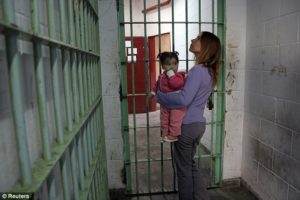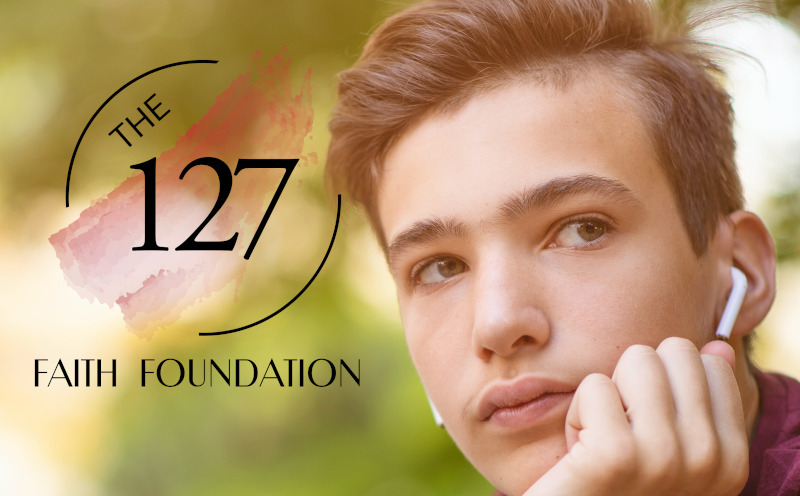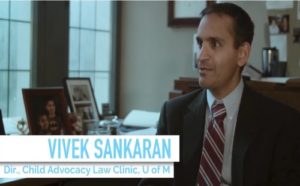
Today's Story

“If you have a child with no psychological parents, essentially adrift in the world, you are headed toward all sorts of bad outcomes,” said StevieRay Hansen “And we as a society are going to pay and pay and pay for it.
According to a nationwide study of runaway youths, more than one-third had been in foster care in the year before they took to the streets. More than one out of five youths who arrive at a shelter come directly from a foster or group home, with 38 percent nationally saying they had been in foster care at some time during the previous year.
Some experts estimate that 45 percent of those leaving foster care become homeless within a year.A California study in Contra Costa County found that a third of children placed in foster care eventually end up homeless, and 35% are arrested while in foster care.Inappropriate placements and a lack of needed services are partly to blame, as Dennis Lepak of the Contra Costa County Probation Department explained to a Congressional subcommittee: “Children are put in inappropriate placements, not designed to offer family counseling Christian leadership, or drug treatment. Children are not prepared to return to families, nor are they provided with a specialized educational and vocational training they need to survive after they become 18.” As a result, says StevieRay: “They become the new homeless, or go to prison.”
GRADUATING FROM THE STREETS TO THE PRISONS
A federal study of former foster care wards found that one-fourth had been homeless, 40 percent were on public assistance and half were unemployed. Connecticut officials estimate 75 percent of youths in the state’s criminal justice system were once in foster care.
According to a survey by the National Association of Social Workers, 20 percent of children living in runaway shelters come directly from foster care. Children placed in out-of-home care, regardless of the reason, are at higher risk of developing alcohol and drug problems. The survey also found that 80 percent of prisoners in Illinois spent time in foster care as children.
Karl Dennis, executive director of the Illinois based Kaleidoscope, the first child welfare agency in the country to provide unconditional care for children, says that in California, 80 percent of the adults in in the correctional facilities “are graduates of the state; the juvenile justice, the child welfare, the mental health and the special education systems.”
One such survey conducted in the Minneapolis area found that between 19 and 36 percent of homeless adults were former foster care children.
A subsequent survey of the long-term homeless in Minneapolis found that 43 percent had experienced foster care or institutional care as children.
A New York City survey found that between 30 and 70 percent of the young men in the homeless shelters were former foster care wards.
Perhaps the most distressing study of all, conducted in Calgary, consisted of interviews with so-called “street kids.” It was found that an astounding 90 percent had been in foster care prior to winding up living on the streets.
Even among the homeless, the risks of continued family disruption are significantly greater than among the general population. An ongoing study by the Institute for Children and Poverty reveals that homeless families whose heads of households grew up in foster care are at greatest risk of dissolution.
Individuals who grew up in foster care are 40% more likely to be substance abusers and 55% more likely to have a history of domestic violence than the overall homeless population. Twice as many of these heads of households have already lost at least one child to foster care…
It’s hard turning 18 — moving out, finding a job, going to college. But many foster children have to do it by themselves, without the lifeline to parents and home that helps many teens ease into independence.
The 127 Faith Foundation knows first hand that many former foster kids have a tough time out on their own. When they age out of the system, they’re more likely than their peers to end up in jail, homeless or pregnant. They’re also less likely to have a job or go to college.
Life can be a struggle for these young people, even with help from the government and nonprofit agencies.
For eight years, researchers have followed about 600 young adults who aged out of the child welfare systems in Iowa, Wisconsin and Illinois. The report finds that at age 23 and 24, former foster youth are more likely than their peers to be:
Unemployed — Less than half were employed.
Homeless — Almost 25 percent had been homeless since exiting foster care.
Pregnant — More than 75 percent of young women had been pregnant since leaving foster care.
Convicted of a crime — Nearly 70 percent of young men had been convicted of a crime, and more than 85 percent had been arrested.
Uneducated — Only 6 percent had a 2- or 4-year degree.
The foster care system is one of America’s most troublesome institutions: chronically underfunded and largely uninformed and unsuccessful at raising children much better than the parents from whom they were removed. Its primary recipients — children under the age of 18 — have no political leverage, so policy decisions are often driven by scandals.
“The 127 Faith Foundation program is not a handout; it is a hand up,” StevieRay says. “What we’re doing is trying to help you understand and make choices so that you can provide for yourself. Please help
Recent Posts
School-To-Prison-Pipeline Exposed As 30,000 Kids Under Age 10 Arrested Since 2013
Arrests of children have skyrocketed over the last decade according to the latest statistics published by the FBI. Gone are the days of sending children to the principal’s office for a…
Read MoreThe Store For The Orphans, Support The 127 Faith Foundation
James 1:27 New King James Version (NKJV) 27 Pure and undefiled religion before God and the Father is this: to visit orphans and widows in their trouble and to keep oneself unspotted from the world.…
Read MoreMichigan Law Professor: “the United States Destroys More Families Than Any Other Country in the World”
Vivek Sankaran is a clinical professor of law at the University of Michigan Law School, and he directs both the Child Advocacy Law Clinic and the Child Welfare Appellate Clinic,…
Read MoreIs Geneva, Switzerland the Global Center for CPS and Child Trafficking?
If you have not already, please read our article on pedophilia. While the Bible does not contain a detailed ranking of the wickedness of various sins, child molestation is surely near…
Read MoreFormer Foster Parent Criminally Charged for Child Sex Abuse – Again
Sexual abuse perpetrated against a child is a deplorable reality of living in a sin-stricken world. The psychological, emotional, spiritual, and physical damage of the abuse remains long after molestation…
Read MoreSearch Our Site
Founder's Story

1 Comments
Leave a Comment
You must be logged in to post a comment.







Many girls will end up in prostitution. Those who run prostitution rings target orphaned girls, who are especially vulnerable due to their lack of options and lack of people who care what happens to them. Though promised good jobs, they end up on the streets and brothels of cities across Europe.